Susan Roth: ‘Ken Noland: The Door Wide Open’
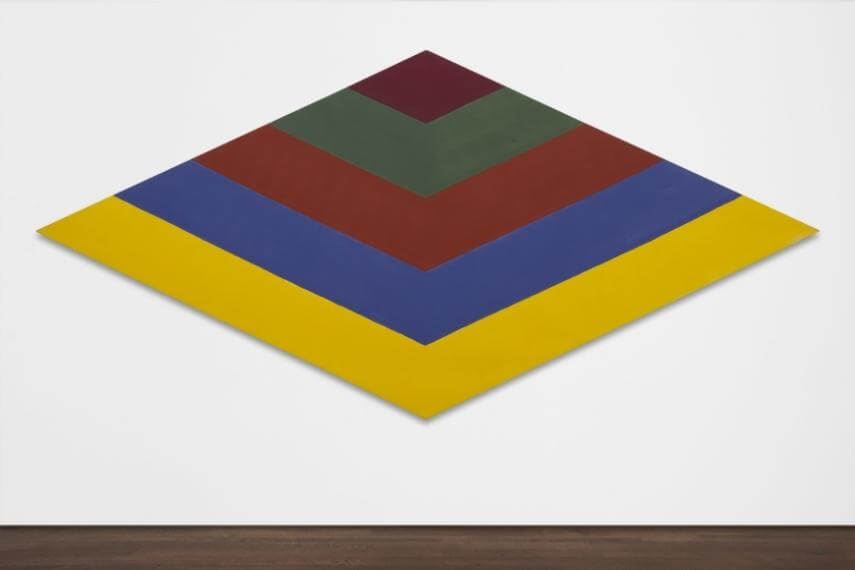
‘Ars longa, vita brevis.’ (‘Art is long-lasting, life is short.’)
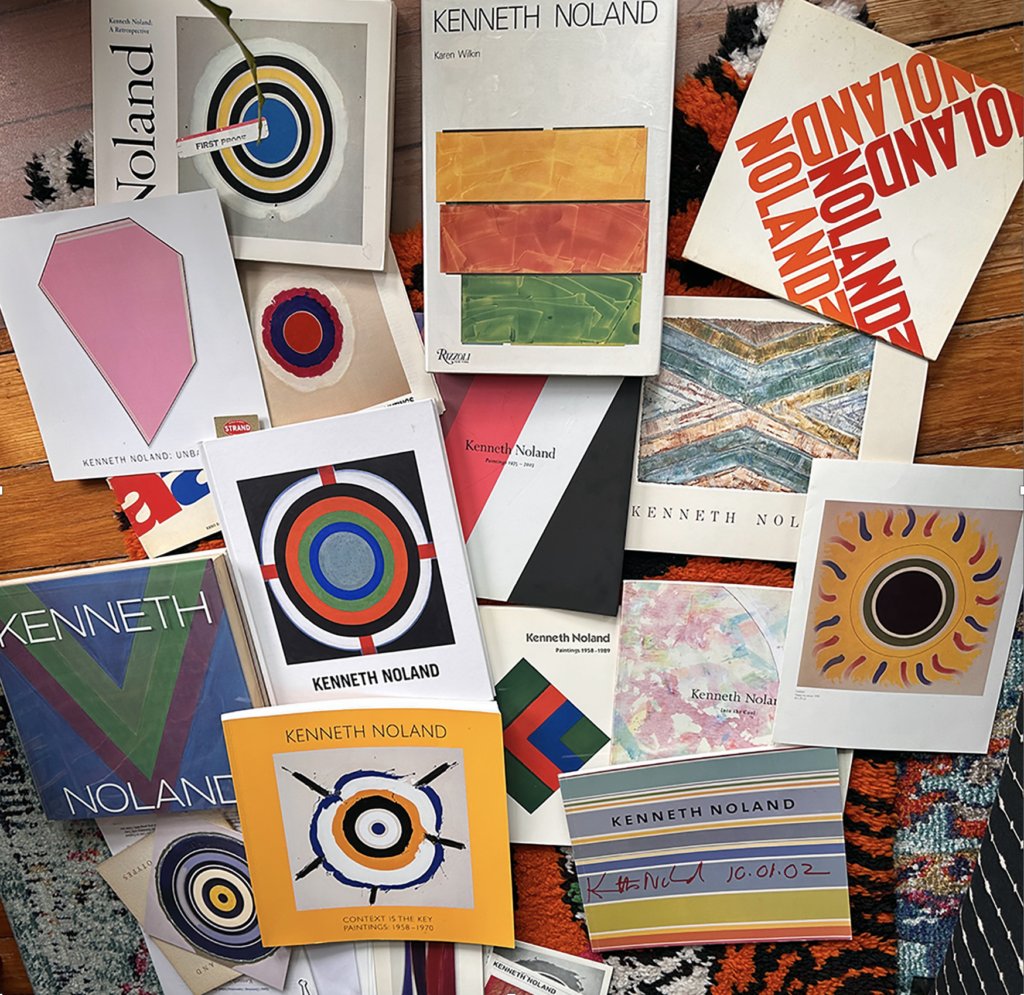
Even as I was writing about Morris Louis, I knew I would next set to write about Ken Noland. As the books and catalogues on Louis covering my floor confirmed: embedded in every essay on Louis, we find Noland. At times the space between two painters had no edges; but then boundaries formed themselves. Louis insisted the paint made for him was exclusively his, which interrupted their shared studio exchange. And now, amid my rereading of writings on Noland, my thoughts turned to Muhammad Ali, that great prize fighter lucky enough to have had worthy opponents. Noland vs Louis, Noland vs Judd, Noland vs Johns, Noland vs Hoyland, Noland vs Caro, Noland vs Stella, Noland vs Olitski: with each, Ken goes toe-to-toe. Oh, and Noland vs Gil Evans: Noland’s grip on art’s imagination is like the dialogue in jazz, in which one starts out from one predecessor’s form, and receives the push from another. Here, progress is liberty; here we find Ken Noland.
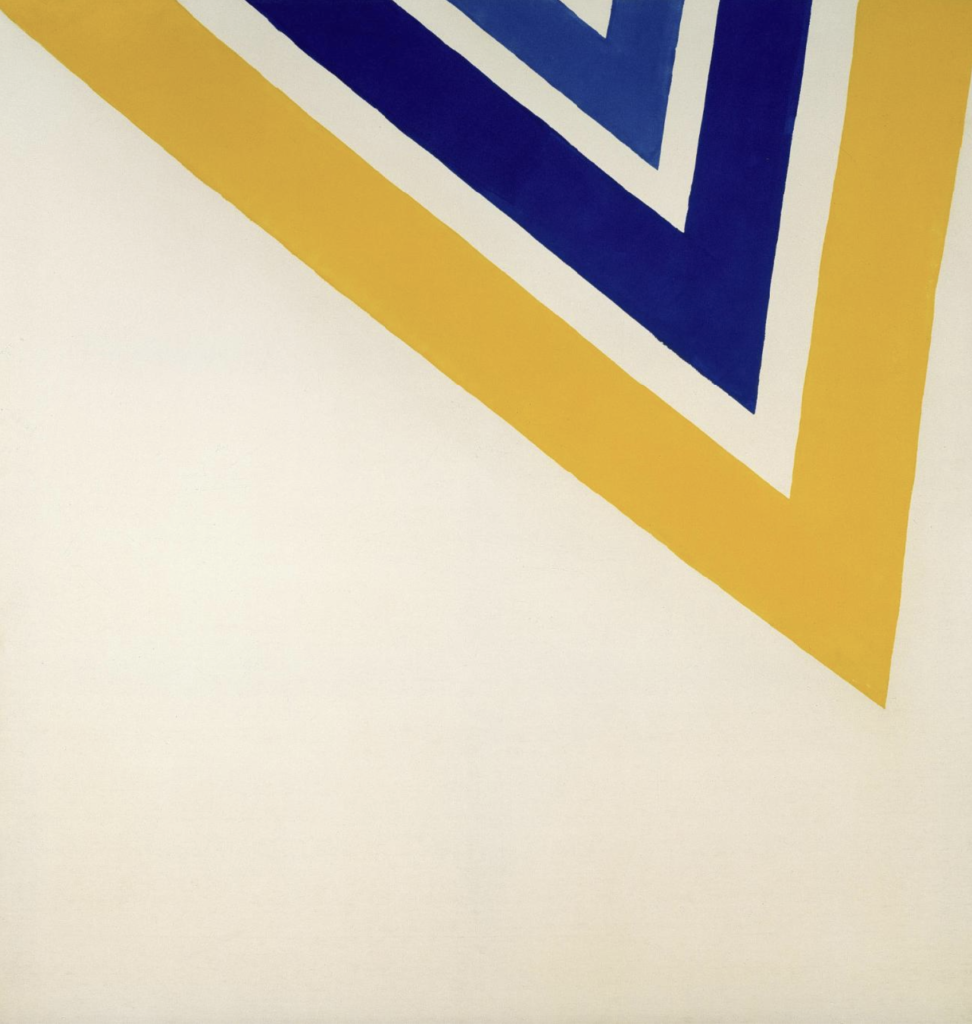
Although I had seen his work earlier, the 1965 Jewish Museum show made me a believer. Finding experience in ideas, an impossible conundrum, did not prepare me for all Noland had stripped from painting. The paintings were fast whilst I, filled with painting dreams, was slow. This second time round, I had the capacity to see the work anew. Thinking back, I have a sense of an awakening, as I did during the countless, sometimes daily trips, to the Frick Collection, to visit what became my touchstone, El Greco’s ‘Vincenzo Anastagi’. My grandfather, a man of few words, depositing my twelve-year-old self at the Frick’s door, tapped his hat and quoted Yeats: ‘It is myself that I remake.’ I would continue these visits long after I stopped needing a chaperone. I began to understand looking is not a reaction to art, it is a connection to the work, a way to quantify the value of life. It is both dialogue and diary. I am reminded, ‘Don’t season your plate before taste tells’; everything in its time. ‘Vincenzo Anastagi’ impelled me to live up to the intensity I felt before the Noland pictures.
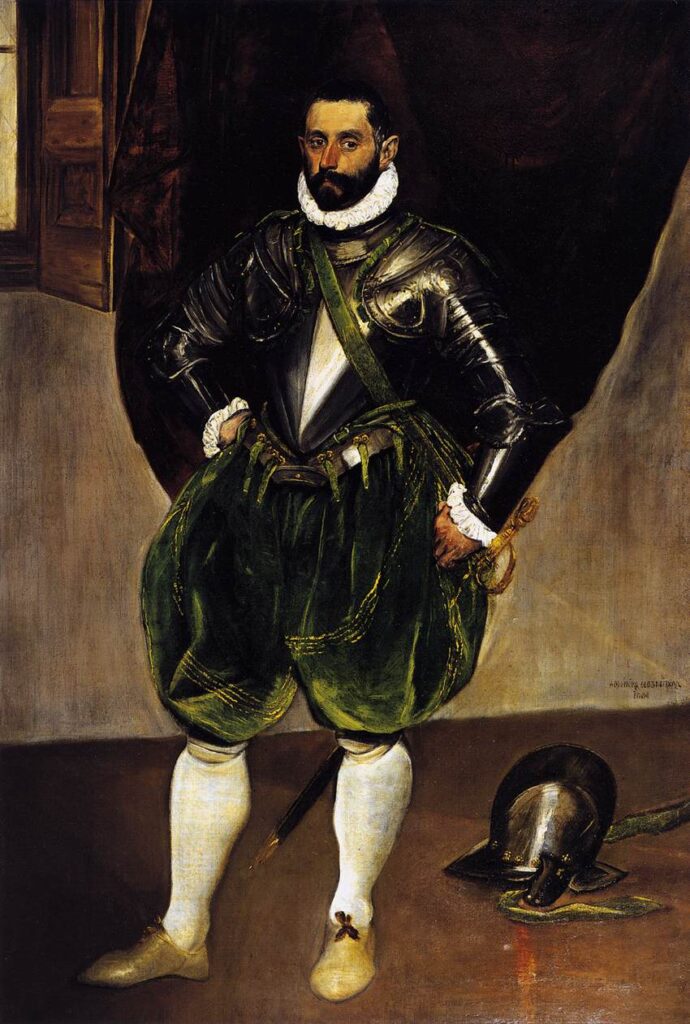
Ars longa, keep going.
Experimenting with all the difficulties of simplicity, Noland’s pictures held my emotion with a precision of handling of the medium seemingly without touch. The artist’s expression of self moves the viewer into the artist’s place, a mirroring effect. We interpret vision through the lens of assumptions and I surrendered to the transformative process of reevaluating mine. I found myself free for a moment at that moment. I saw anew. I stood transfixed before the work. The dignity of painting is communicated in radiant colour. As Constable before him, Noland put colour next to colour. A unity is achieved by the relations between the colours themselves: Colour like time, is relative, not absolute. Noland’s creative repetition, like Bach in his ‘Art of the Fugue’, seems to make every arrangement possible: by making each colour a delayed variant of the previous one, as in contrapuntal writing, seemingly endless permutations are opened up. Noland’s curiosity spoke of an open-mindedness to be followed and admired, of something to be cultivated in oneself. Looking then, though distracted by my own struggle, I found myself trying to see logic in daydreams. In the challenge for uniqueness an artist strives fearlessly to discard conventional solutions, as in dreams. This was the beginning of the search for a voice, my own unique voice. Speechless, I was hooked.
I first met Ken in the early 1970’s. Seeing and feeling art as sensibility, as passion, his enthusiasm was infectious. The recognition crucial to his flourishing- which by then he had begun to receive – gave confidence to Ken’s natural generosity. Amid the shaped canvases in his Bennington studio, the question arose: did a picture need a right angle, at least one, to be comfortable on the wall? No: if it addresses the wall, then it is painting. This aided in my growth.
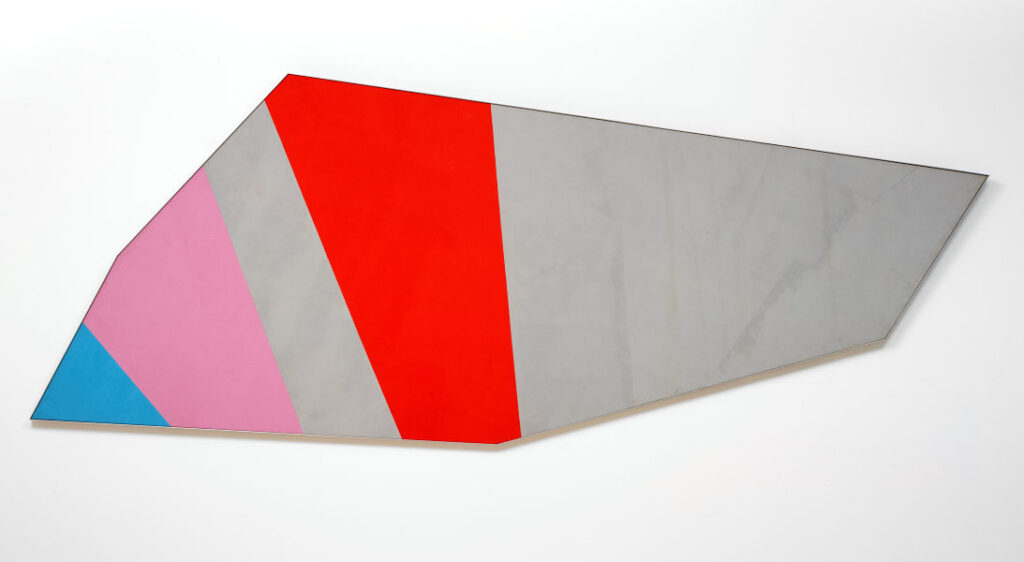
.
Helping to shift around large sheets of white paper, screening what was the painting from what was not, I was both participant in and witness to the process of opening up a complete understanding of what was before us. His was a magnificent art of pure geometry, clean and modern, no illusions. I wondered then what caused those changes from previous art; was it canvas, colour or surface? This search of Noland’s for the finished picture was unlike anything I knew. It was not a case of ‘an inch off here’, tightening the image, changing proportions of color and weight; nor was it a case of ‘here, this much is the picture and now begins another.’ No, Noland had devised a way, as in the recording of sound, to have many ‘takes’, thereby allowing the most powerful expression of the paintings ‘moment’ to be captured and held. What I understood then – and continue to marvel at- is how many remarkable opportunities each work had to be its best. Noland’s practice enshrined a genuine freedom through its strategy of experimentation that remained open to the ever-changing distribution of his diverse array of colour. His was a magnificent act of modernist art making, without illusion. In this search for a picture’s completion there were no inequities of experience or power in the face of his art. Ken listened to and registered each person’s suggestion with a willingness to try and apply it. His pragmatic faith allowed the best picture to emerge. His was a journey of discovery which he was eager to share.
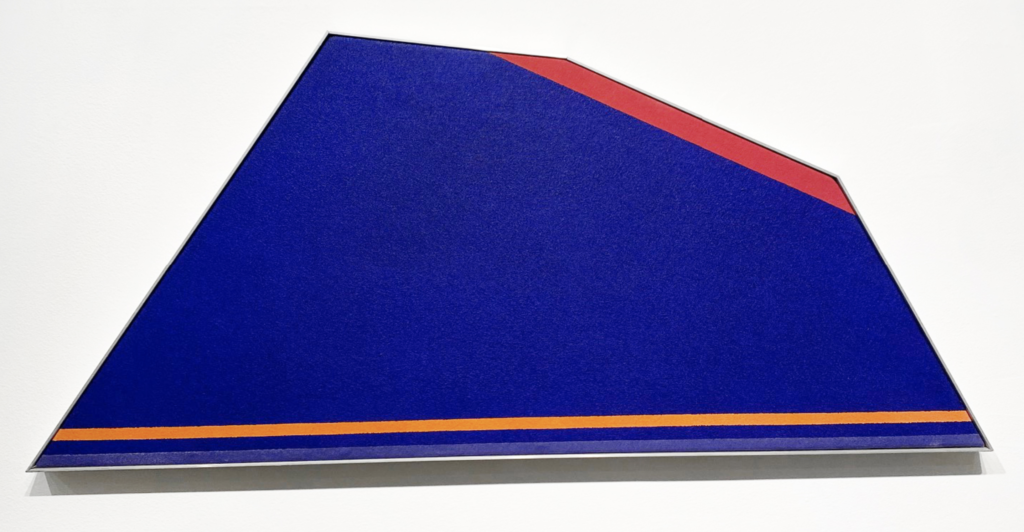
I understood then that comprehending a persuasive voice has a lasting impact. It seems that all art periods, named or not, venerate most the art that fully embodies their values and aspirations. I knew then that what was needed- originality and creativity- might lead me to a very different relationship with my own work than that which I saw in Noland’s art. To be influenced is to change. The hard part is adding yourself to what you have found. Noland’s practice shifted my understanding of what matters; all my hopes and ambitions felt this shift as I carried my dreams back to the studio.
Ken would go looking everywhere; yet still it surprised me when he drove five hours from his home in South Salem, NY, to Canastota, NY, to see our onion barn. ‘Build your machine!’, this was the mantra he kept repeating to us. He reminded me that our home, being so remote, would require a clean, gallery-like space to reassure visitors. As two painters living and working side by side, that clean space would, for each of us, allow the other, in the best sense, to disappear. I understood: be patient, earn your turn. The planning of one’s workspace needs be efficient; shelves must be stocked. These are workaday necessities. To obtain serious results, plan for them, and put the plan into practice. This, Ken reminded us, was the gospel according to David Smith. Noland had watched Smith work and rework, and Noland’s studio practice changed, as did the resulting art. Reading Elaine de Kooning’s essay, ‘David Smith Makes a Sculpture’, showed me where this attitude of Ken’s was first formed. de Kooning quoted Smith: ‘You get something from everybody.’ It is an attitude that speaks of the wish to integrate.
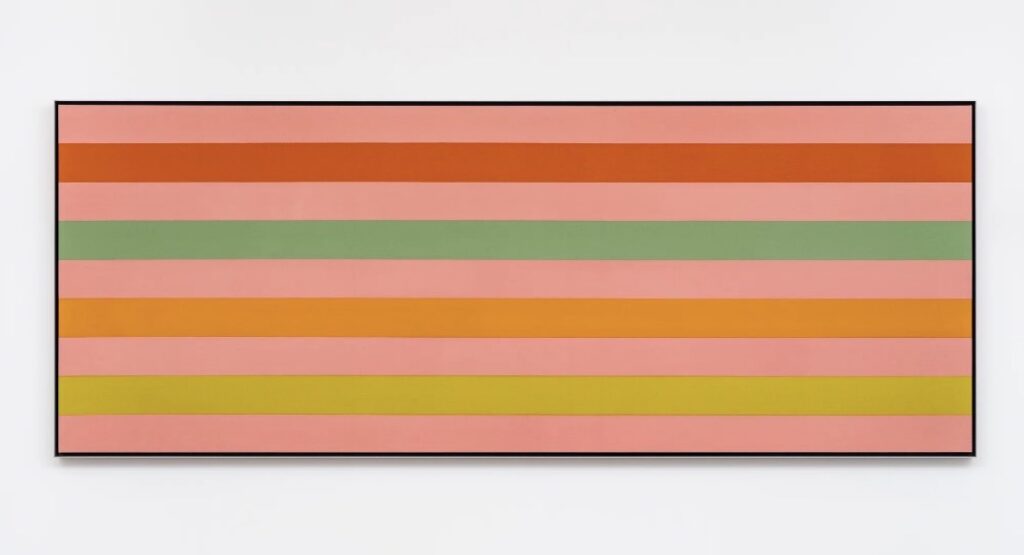
Creative risk invites periodic failure: yet walking through Noland’s 1977 Guggenheim Retrospective brought little evidence of low, slow, or empty moments. It was something of a shock to see the striped paintings on the museum’s curved walls. The parallax that occurred in viewing these very large horizontal stripes required the viewer to observe the painting along two different lines of sight: the object and the wall’s action. Nevertheless, the show communicated Ken’s sustained presence. My enthusiasm was not universally shared, though: Robert Hughes, writing in Time Magazine, saw the scope of Noland’s art as ‘too narrow and abstract’1‘Time’ Magazine, February 5th 1977 to be of consequence to following generations. I was stunned. Hughes’ historical imagination lacked faith in modernism’s breadth. T.S.Eliot, in ‘Tradition and the Individual Talent’, reminds us that certain works shift our sense of tradition (in terms of what matters now) and that, in turn, changes our feeling for the past by prompting the asking of new questions. Experience brings diversity forward. Alan Solomon, writing in the catalogue of the 1964 Biennial of American Art, describes a ‘profound alteration of attitude’ in Noland’s generation. For Soloman, the canon, the tradition, embodies empathy and in that way informs us of something genuinely new. Einstein enriches Newton. Our problems in seeing have become more complex due to the limitations of our age. Whether preoccupied by definitions, (‘AbEx’, ‘Colourfield’) or clinging onto preexisting prejudice, we struggle to see the continuum, and may unwittingly succumb to the narrowing which often makes nostalgia of great art. All this runs counter to how art stays vital. In that moment at the Guggenheim I was amazed how close Ken came to bridging the divide.
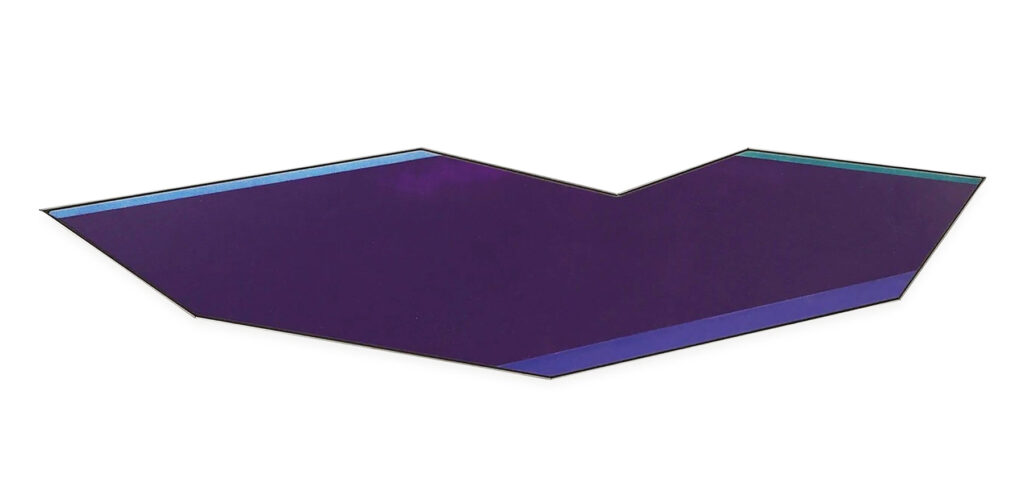

For many years I lived with a Ken Noland painting. I stopped before it sometimes for a moment. At other times, caught by the light, it was a chance event, like a kiss, that might change everything. Art lifts. It is the very crux of why we make it and collect it. Every painter will tell you through their painting what they believe painting is. We assess ourselves as we access art. Ken’s cool picture ignited creative curiosity, and though long gone from the wall, I see it still. Meaning – we may see, we may feel – comes through the medium, completing the work. As his late stripe paintings acknowledge, the scrub brush Noland used on painted canvas reduced material presence, insisting that all the painting’s properties are perceived in terms of its colour. Noland escaped the sheer materiality of paint by asking colour to clear out everything else. I remember standing in front of our Noland, wishing, if only I could be as ethereal. . . alas I am not. What I found, being a collage/assemblage artist, was that mass, for me, was also an aspect of colour. I refer here to perceived perception. Astronomers teach that while some experiments cannot be yet realized, the observed properties of stars tell us that light interacts with matter. Our biology allows us to see light as colour, and that paint colour is more, much more, than pigment: it is also the binding medium, the absorbency of the surface to which it is applied, the texture of the finish, and so on. Noland stating ‘It’s all colour and surface’ leaves a lot of room for the rest of us. During my 1989 visit to Taliesin West, Frank Loyd Wright’s winter home and desert laboratory in Arizona, I witnessed Wright embedding Asian ceramic into concrete. Returning home, I called Mark Golden of Golden Paints. His addition of pumice to the paint’s body, in various hues, gave me the opportunity to work with and observe mass imbuing colour with a depth and weight, both visually and sensorially.
The struggle of growth is non-linear, syncopate, forwards and back, from many points of view; ultimately, the hope is to add to our appreciation of the nature of the work. There is no knowing in advance, and space cannot stand still; it is always expanding and the gaze brings change. When Ken’s picture left the wall, I did not hang a work of mine there for quite some time. Such was my love, and such was my fear, would I hold the wall as well? He continued to challenge.
I think now of my slowness with his art and my uncertainty with his last pictures. Ken was not remaking his past. Comparing these works to Cezanne, as some have tried to do, makes sense. But to see them, to stand before them startled by their newness, I would have to wait. I would need patience to see, to let the pictures do their magic, if that were to happen at all.
We received a call from a friend; Ken is failing. ‘He asked after you both; can you come?’ We packed up and got on our way.
Walking into Ken’s Port Clyde studio, he sitting at a table beckoning, hollering: ‘They have forgotten me! I am here all alone!’ Serious or not, I knew this was not Ellison’s ‘Invisible Man’ of recognition denied. Noland was missing art talk.
.
We told him of our recent return from the California Institute of the Arts, where a critique for graduate painters had been held in a gymnasium. Sitting high in the stands, we watched as a painting was placed on an easel, straight away eliciting resounding foot-stomping and rhythmic chanting: ‘KEN-E, KEN-E!’ ‘What’s this?’ we inquired. The reply: when a particular work or group of works is admired, the chant catches light! ‘Ken-E’ is Kenneth Noland, every student’s favourite! Retelling it there in his studio, we laughed through the tears.
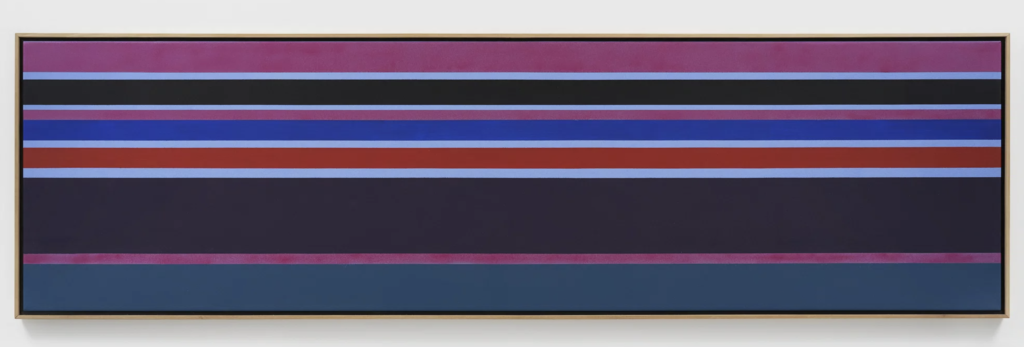
I sat there and the light of Port Clyde filtered everywhere. Looking up at the pictures, I felt their impact. At that moment I felt the backcasting; as in fly fishing, it’s the whipping back and forth of the line until the right release for the moment is felt. Ken was not revisiting early formats, rather using the old format to bring new feeling to his last paintings. This gathering of his history and his thread, all of one line and behind the castor, is a method that envisions alternate futures. Ken had once again kept all possibilities available. Noland’s simplicity of design and complexity of matter invites me too fare forward with optimism. Influence is the cause of change. JR Hughto aptly describes this process and the grace of influence:
‘It is over duration that we are changed. . . that we are part of the whole, changing. When one is able to identify those things that have been of influence, one is reminded that one remains part of the whole that remains open, and therefore awaits the next duration in which to be changed. It is the responsibility of the individual to be prepared – and open – when the next stimulus presents itself. Only by acknowledging and embracing that we are part of the open whole do we remain open to change, to learning.’
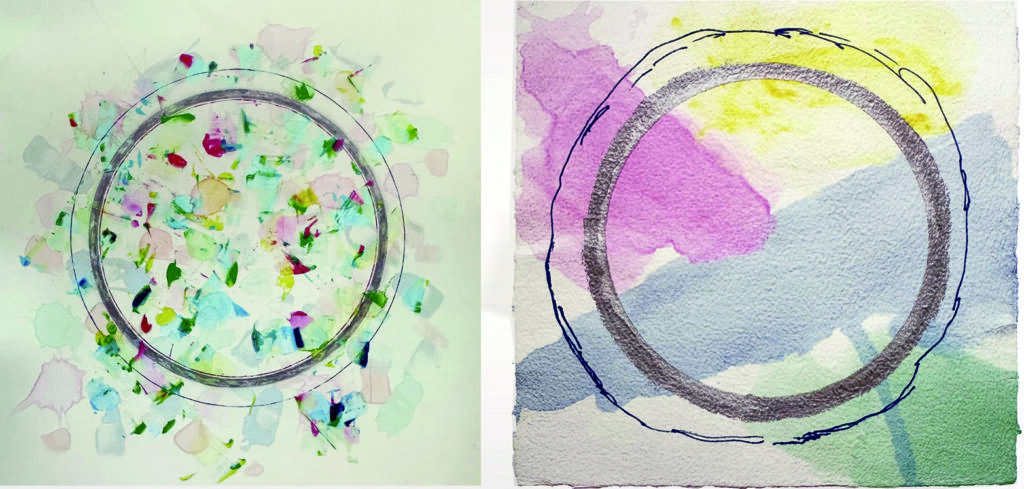
Noland’s light hand, weightless, whispering, no longer dense, was not an adaptation to place, nor resolution, nor reconciliation, nor even a new mode of apprehension. The pictures scattered light, no source or direction discernible, no vanishing points, invading my space. My tolerance for ambiguity was challenged. These pictures of his are a synthesis of conscious memories with all the awareness of the present. Ken’s language enabled him to say what he wanted. The silence of a late Noland is not as simple as saying nothing. The late work bends back toward history, exposing unspoken assumptions. He was always searching for the light. This colour painter left us knowing it’s the light: colour is an expression of light.
‘To be abstract, really out there,’ Ken whispered to me at the opening of my 1987 NY Salander/O’Reilly show, ‘you need to conquer the square.’ So, moving forward, my stretcher collaborator gone, I take up his dictum as his pictures insist.
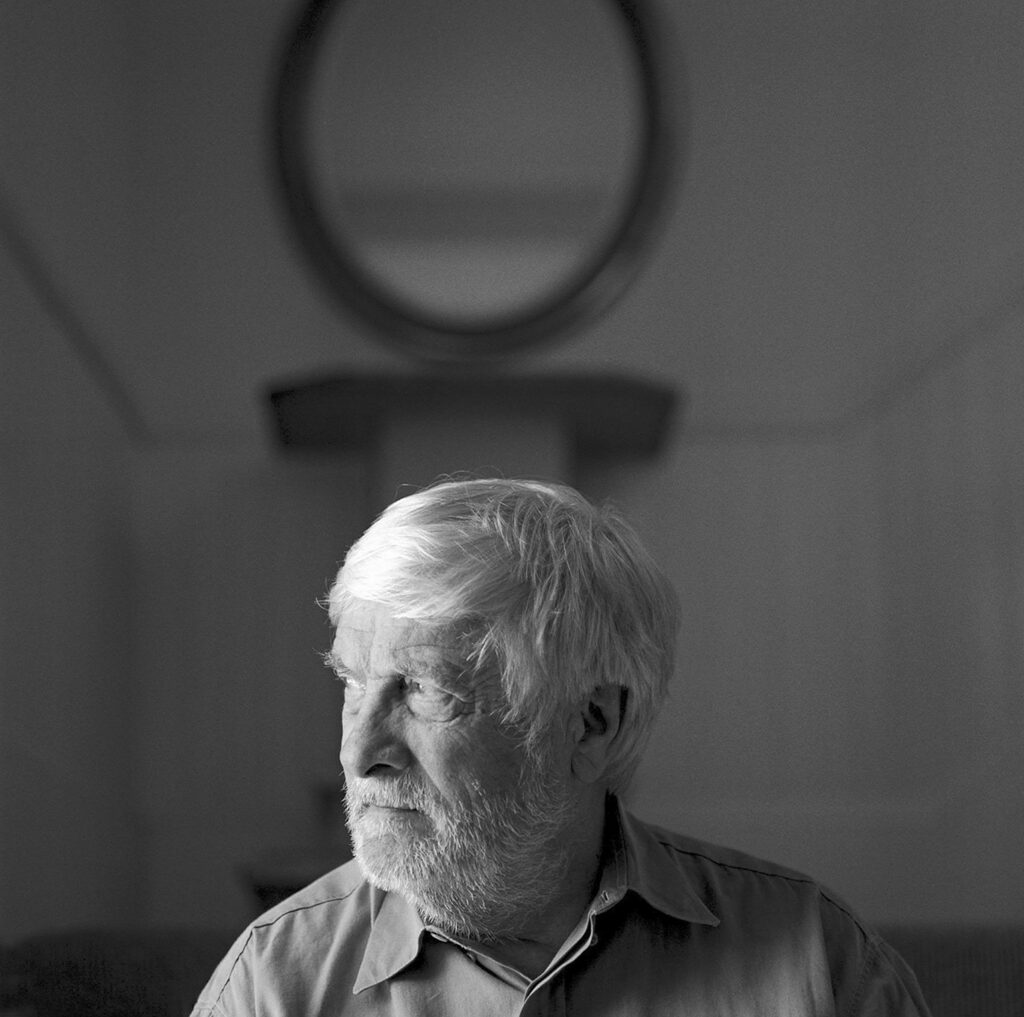
‘We have no other means of recognizing a work of art than our feelings for it.’
Clive Bell
Bibliography
Batchelor, D, ed. COLOUR: Documents of Contemporary Art. ‘Kenneth Noland –
Colour, Format, and Abstract Art’, Interview by Diane Waldman, 1977, London
and Cambridge, Mass, Whitechapel and The MIT Press, 2008, pp 167-171
Bell, Clive. ‘Criticism since Cezanne’, London, Chatto and Windus, 1922, pp154-179
de Kooning, E, ‘The Spirit of Abstract Expressionism: Selected Writings’, ‘David Smith Makes a Sculpture’, New York, George Braziller,1994, pp 103-108
Eliot, T. S., ‘The Sacred Wood: Essays on Poetry and Criticism’, United Kingdom, Waking Lion Press, 2011
Hughto, J.R., 2000, ‘Kokoro’, https://www.paintedland.com/kokoro/essay/duration.php
10 thoughts on “Susan Roth: ‘Ken Noland: The Door Wide Open’”
Thank you Susan, for your insights into Noland’s paintings, and what he meant to you. By sheer coincidence, last night I had watched an interview on YouTube with Noland and Diane Waldman for the 1977 Guggenheim Museum retrospective. The arts interviewer asked Noland questions but didn’t listen to his replies, so he struggled to answer. (She didn’t seem to know who Albers was.) Luckily, Diane Waldman was clear and had his back. In another YouTube video, Greenberg described how Noland found the center of the canvas, and embraced symmetry in all directions. I’ve seen his art but never met Noland, so your words count.
Good to read Susan’s insights. And a great selection of images. I’ve loved Noland’s paintings for decades, his colours and geometry continue to astound and challenge me.
Really enjoyed reading this essay! And I love that Susan made the point that Noland in his reductiveness in the early works achieved his colour and paint application seemingly without touch… A quote from Susan.This is a really important point in the way that Noland’s color presents itself. And I also enjoy that this is as much an artist’s diary of her own learning and progression as it is a piece about Noland.
This is just superb! I hope Roth will keep on writing. I am sending this essay to my MFA candidates who are struggling to finish their theses.
I very much enjoyed Susan’s article. I found Noland’s comment ‘you need to conquer the square’ quite timely. In 2016, there was a Turner exhibit at the AGO and as I got to the last room, there were a group of late Turners, all in a square format. I was so taken by them! I looked at them and could not fathom what so captured me but I knew that something was ‘there’.
Anyway, 6 months ago I started to work in a square format and I’m finding it absolutely challenging. I have thrown out quite a few canvasses but I feel compelled to move on. Noland’s comment indeed resonates!
Susan is my teacher. I am her student. Thank you, Sue, for letting me see and work on understanding more.
Yes, his door was wide open to me, a naive English sculptor. Thank you for two images: The El Greco, which says much about your art, Susan; and the Noland portrait, which is great and deserves a credit.
Thank you, David. Allison V. Smith took the photo in 2005; it was published in the Pace catalogue ‘Into the Cool’… the last pictures.
That portrait joins others of artists one can call special. Mondrian at his easel, Penn’s gum print of Picasso with reflection in the eye, Hans Namuth’s David Smith with pipe and damaged thumb.
I arrived in New York in 1981 to teach at Hunter College as Associate Professor in Painting. I saw a totally different bunch although I’d do my laundry with Billy O’Reilly of Salander O’Reilly. I broke my leg but Helen Frankenthaler let me recuperate on the shore in Connecticut. There was something very Turneresque about our evening talks. Noland was a different story altogether. Clinical, precise. Much love for David Smith but spent studio time with Isaac Witkin, a renegade.